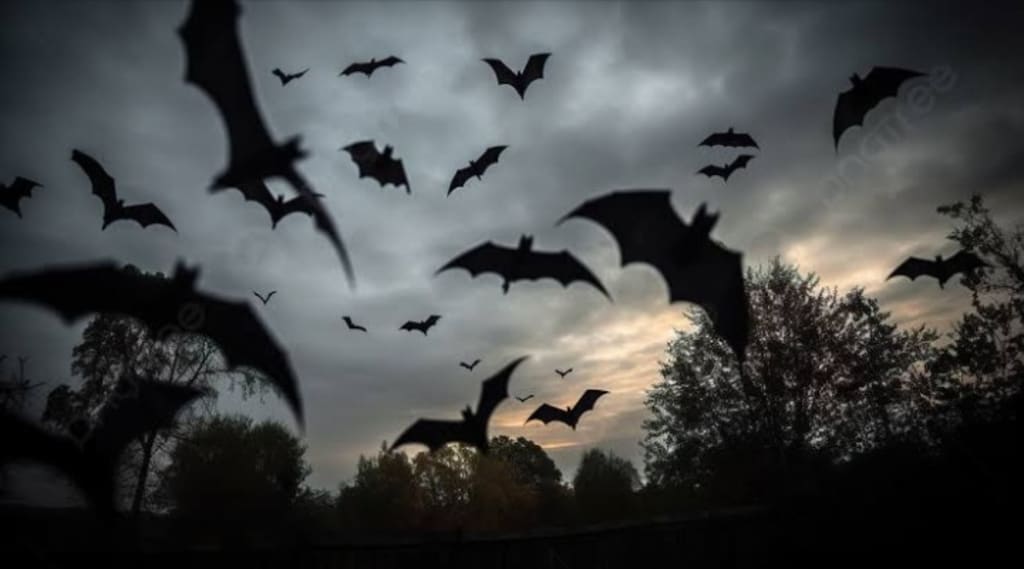The Truth About Vampire Bats
Nature's nightly navigators

Picture a group of vampire bats soaring through the dark skies in search of their next meal. These little creatures, much like the mythical vampires they are named after, rely on blood to survive. But don’t worry, they usually go for cows, pigs, horses, and birds, although they might occasionally pick a human—it's really rare.
Rather than drinking blood like traditional vampires, vampire bats make a tiny incision with their teeth, then lap up the flowing blood with their tongues. They're so smooth and dainty that they can drink blood from an animal for more than 30 minutes without waking it up, and this action doesn’t hurt their prey. Vampire bats have many special talents to help them with their feeding. They can detect prey by listening to the sound of animal breathing and can even recognize the breathing patterns of a particular animal, such as a cow, and return to it night after night.
Unlike other bat species, vampire bats can walk, run, and jump, which helps them catch their prey. They also have heat sensors to help them locate the perfect spot on an animal’s body to feed. Their strong hind legs and a special thumb help them take off after they've finished their dinner. If a vampire bat can’t find its nightly meal, it won’t survive more than two nights without feeding. Fortunately, these bats can be quite generous towards one another; well-fed bats will often share food with others in exchange for grooming.
Now, meet the Egyptian tomb bat. This little creature, with a body length of around three inches, loves to hang out in Egypt's ancient tombs. With big eyes and tiny ears, they look pretty cute. They snack on insects and roost in cozy corners, playing an important role in maintaining the ecosystem by keeping insect populations in check.
Next up is the gray-headed flying fox, one of the largest bats in Australia with a wingspan of over 40 inches. This sleek, dark brown bat with a gray head and an orange-red mantle around its neck can be found in urban areas, forests, woodlands, and mangroves. They spread their wings and fly up to 31 miles at night to feast on fruit, nectar, and pollen, earning them the nickname "fruit bat." These social creatures form camps of thousands of bats, playing a crucial role in healthy forest ecosystems by pollinating and dispersing seeds. Lastly, consider the bumblebee bat, also known as Kitty’s hog-nosed bat, one of the world’s smallest mammals. Weighing less than a penny, they fit comfortably on your finger and are found only in Thailand and Myanmar. While bats are fascinating creatures, they can also carry diseases. Bats are the most common rabid animal in the U.S. If you find a bat in your home, try catching it for testing to determine if you need rabies vaccination. To keep bats out, seal up any holes they could use to sneak inside and use clear plastic sheeting or bird netting.
One notable virus carried by bats is the Australian bat lyssavirus, which spreads through contact with infected bat saliva. Although rare, this rabies-like disease is usually fatal. Avoid handling bats unless you’re trained and vaccinated, wash any bat bites or scratches with soap and water, and seek medical advice about rabies vaccination within 48 hours of potential exposure. Another virus to be aware of is the Hendra virus, transmitted to humans through close contact with infected horses, though there's no evidence it spreads directly from bats to humans.
Bats play a vital role in ecosystems worldwide, from controlling insect populations to pollinating plants. Despite the risks, understanding and appreciating these night navigators helps us coexist with them safely.
About the Creator
Enjoyed the story? Support the Creator.
Subscribe for free to receive all their stories in your feed. You could also pledge your support or give them a one-off tip, letting them know you appreciate their work.





Comments
There are no comments for this story
Be the first to respond and start the conversation.